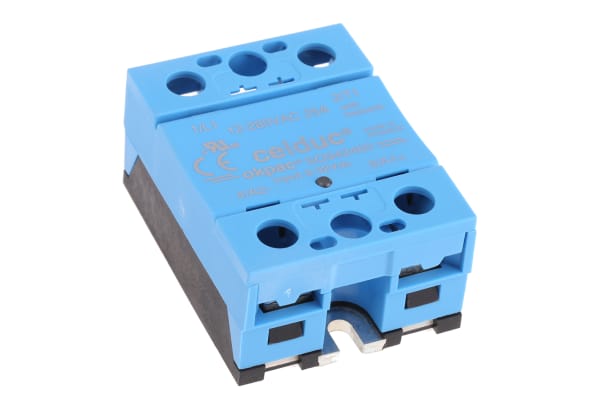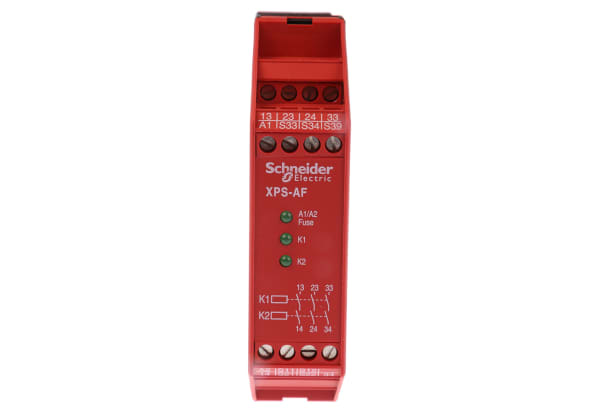- Published 12 Jun 2023
- Last Modified 29 Aug 2023
- 5 min
How Do Relays Work?
Where processing and function take place in an electronic device, relays play a fundamental role.

Reviewed by Karl Ralph, Technical Support Engineer (February 2023)
Many electronic devices use relays to help with completing actions, but how do they function, what types are there and how do you test a relay’s functionality? Our guide has the answers.
What are Electrical Relays Used for?
Electrical relays are common in day-to-day use and function as on and off switches. They were reportedly invented in 1835 by Joseph Henry, to aid in the technological progression of the electrical telegraph. Electrical transformers can open and close circuits by using outside electrical signals to function. They can also be used to control many circuits at once and can also help switch current from AC to DC. Electric relays are present in a multitude of devices, from tv remotes to air conditioning units.
Other examples of where relays are used include gas valves, headlights, windshield wipers, lighting, alarm systems, warning systems and many more. In fact, many electronic devices couldn’t operate effectively without the use of a relay.
How Do Electrical Relays Work?
Electrical relays have a straightforward design that works using magnetic fields. Inside the electrical relay exists two circuits, one with an electromagnet, and one with a switch/door with a spring attached. Both circuits interact through an electromagnetic field, which is activated when a current is sent through the first circuit, containing an electromagnet. The magnet activates and pulls the switch/door closed on the second circuit, meaning that a current will then run through the second circuit. When the current is turned off on the first circuit, the magnet releases the switch/door on the second circuit. This then breaks the second circuit and stops a current from travelling.
How Do Automotive Electrical Relays Work?
Automotive relays are an integral part of a vehicle's electromechanics. They are used in a multitude of areas, including lights, door locks, air conditioners and more. They have a few more components than a simple electric relay and contain an outer casing, followed by insulation, which protects a coil and metal core. There is also a yoke, a spring, an armature, a bonding strap and contact points.
The spring, core and yoke make the first circuit, whilst the contact point, armature and contact points make up the second circuit. The function of the relay works the same in that a current is passed through the first circuit, which causes the yoke and core to pull the armature and create a current in a second circuit. However, the function of an Automotive relay is extended beyond an on/off mechanism, by the fact that there are contact points beyond the armature, meaning that currents can be directed to different circuits depending on what current is passing through the first circuit.
How Do Reed Relays Work?
Reed relays are relays that use reed switches to operate. These are very fine and consist of two thin pieces of ferromagnetic metal in a glass casing, which is usually filled with inert gas, to stop the connection from sparking. When a magnetic field is placed close to the reed switch, the two fine metal pieces come together and close a usually open circuit. Due to their structure, a lot less voltage is needed to create a magnetic force strong enough to close the circuit, meaning that the reed relay is faster. It also means that these relays can be developed to be exceedingly small. In the real world, relays can be found in alarms, where their small size and very responsive reaction are most useful.
Solid State Relays: How Do They Work?
Solid state relays, also known as SSRs, differ from standard electrical relays in that they have no moving parts. Instead, they consist of semiconductors and the switching is performed electronically. Solid state relays can be found in power transformers, electromagnets, regulators, inverters, switching power supplies, and power converters.
How Do Safety Relays Work?
Safety relays are designed with health and safety in mind and are designed to aid in completing functions that reduce risks and prevent hazards. Examples of their use include emergency stop buttons and working with moveable machinery guards. Other examples can be found in control devices such as emergency stop buttons, magnetic safety switches, light curtains, and two-hand control devices.
Safety relays work principally by having two input signals. When both signals are received correctly, the relay circuit is complete. As soon as an input circuit alters, the output signal will stop and the circuit will break, stopping the current from flowing. These input signals are a way of the relay monitoring and assessing the safety of the device it’s connected to, and creating a fail-safe stop when signals are received incorrectly, and potential danger or hazard is present.
How to Test Electrical Relays
The most thorough way to test an electrical relay is with an Ohms multimeter. These measure the resistance of the relay's coil and will be a good indicator of whether your relay is functioning normally, based on its level of resistance. To test the relay, with the power isolated, the Ohms multimeter should be attached to the coil so it can read the resistance. Anything below 40 Ohms or above 120 Ohms suggests that the coil is damaged, and a new relay is needed.
Another way to test a relay is to place it in a simple circuit and assess its function, to see if the switch/armature moves in the presence and absence of current. A visual check can also be completed to ensure all components are present and undamaged.


